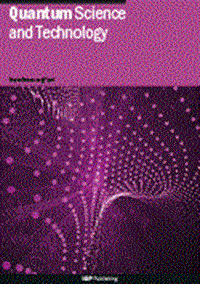基于量子支持向量机的量子相变检测
IF 5.6
2区 物理与天体物理
Q1 PHYSICS, MULTIDISCIPLINARY
引用次数: 0
摘要
揭示量子相变(qpt)对于表征低温下的物理系统非常重要。然而,这些转变的检测受到重大挑战的阻碍,特别是面对基态复杂性随系统规模的指数增长。最近,量子机器学习的出现作为一种阐明多体系统特性的有前途的方法获得了关注,为研究量子力学提供了一种不同的途径。本文提出了一种基于量子机器学习的量子特征综合识别QPT的新型高效量子算法。我们的方法是利用量子计算机将核矩阵直接编码到希尔伯特空间中,通过量子特征映射的并行实现来实现。具体而言,我们利用并行量子特征映射生成一个量子态,该量子态编码给定量子系统的基态信息。所得到的状态准备电路然后用于实现核矩阵的块编码。在此基础上,我们设计了一种新的量子支持向量机(QSVM)算法,构成了分类器的主要成分。该方法改进了当前QSVM算法在处理量子数据和经典数据方面的效率。我们证明了我们的量子分类器在横场Ising模型中预测QPT的有效性。研究结果证实了量子机器学习在识别多体系统中的QPT方面的有效性,并为量子机器学习算法的设计提供了见解。本文章由计算机程序翻译,如有差异,请以英文原文为准。
Quantum phase transition detection via quantum support vector machine
Unveiling quantum phase transitions (QPTs) is important for characterising physical systems at low temperatures. However, the detection of these transitions is encumbered by significant challenges, especially in the face of the exponential growth in ground state complexity with system scale. The emergence of quantum machine learning has lately gained traction as a promising method for elucidating the properties of many-body systems, providing a different avenue to study QPT. In this paper, we propose a novel and efficient quantum algorithm for identifying QPT synthesising quantum feature with quantum machine learning. Our approach is anchored in the utilisation of quantum computers to directly encode the kernel matrix into Hilbert spaces, realised by the parallel implementation of the quantum feature map. Specifically, we generate a quantum state encoding the information of ground states of the given quantum systems by employing the parallel quantum feature map. The resultant state preparation circuit is then used to implement a block-encoding of the kernel matrix. Equipped with the associated labels and this encoding, we devise a new quantum support vector machine (QSVM) algorithm, forming the main ingredient of the classifier. The presented method refines the efficiency of the prevailing QSVM algorithm for processing quantum and classical data. We demonstrate the effectiveness of our quantum classifier in predicting QPT within the transverse-field Ising model. The findings affirm the efficacy of quantum machine learning in recognising QPT in many-body systems and offer insights into the design of quantum machine learning algorithms.
求助全文
通过发布文献求助,成功后即可免费获取论文全文。
去求助
来源期刊

Quantum Science and Technology
Materials Science-Materials Science (miscellaneous)
CiteScore
11.20
自引率
3.00%
发文量
133
期刊介绍:
Driven by advances in technology and experimental capability, the last decade has seen the emergence of quantum technology: a new praxis for controlling the quantum world. It is now possible to engineer complex, multi-component systems that merge the once distinct fields of quantum optics and condensed matter physics.
Quantum Science and Technology is a new multidisciplinary, electronic-only journal, devoted to publishing research of the highest quality and impact covering theoretical and experimental advances in the fundamental science and application of all quantum-enabled technologies.
 求助内容:
求助内容: 应助结果提醒方式:
应助结果提醒方式:


